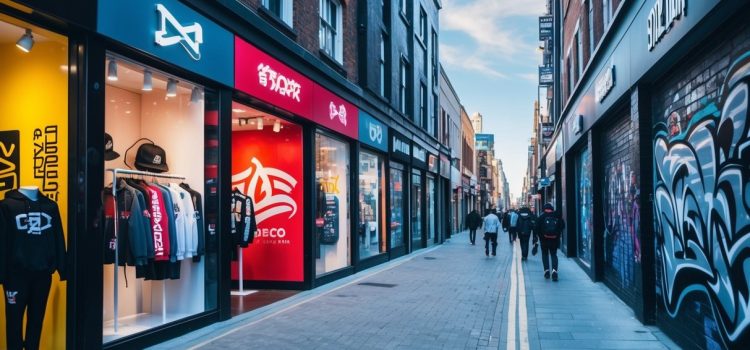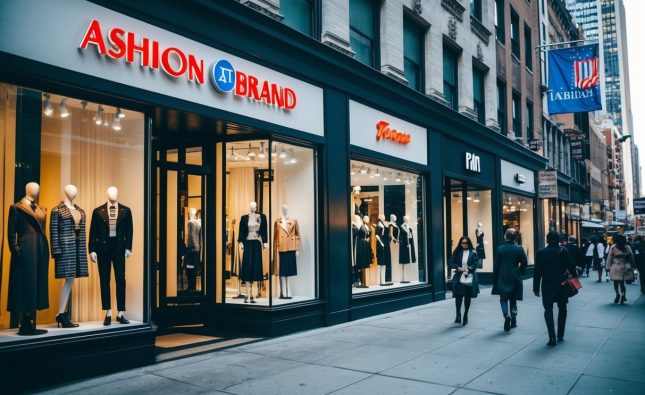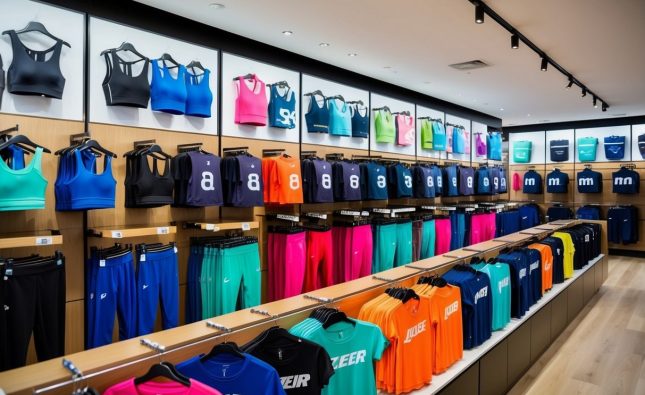
Streetwear has transformed the fashion landscape, becoming a cultural phenomenon that transcends mere clothing. Many brands lead the charge, each with its unique identity and influence on style. The most popular streetwear brands today include names like Supreme, Off-White, and A Bathing Ape, which have garnered massive followings and shaped urban fashion trends.

These brands are not just about clothing; they encapsulate a lifestyle and a sense of belonging within a community. Collaborations with artists, musicians, and other designers have propelled them into the spotlight, creating a buzz around exclusive drops and limited editions. As streetwear continues to evolve, its intersection with high fashion and contemporary art deepens.
Consumers are drawn to the authenticity and exclusivity that these brands offer. Their ability to connect with a younger audience while pushing creative boundaries keeps streetwear relevant and exciting. Understanding these key players in the streetwear scene provides insight into the broader culture that influences fashion today.
History and Evolution of Streetwear

Streetwear emerged as a distinctive cultural phenomenon shaped by various subcultures, primarily skate and surf communities. Its growth can also be attributed to the influence of hip-hop and crossovers with high fashion, ultimately becoming a mainstay in the fashion industry.
Origins in Skate and Surf Cultures
Streetwear traces its roots back to the late 1970s and early 1980s in California, where skate and surf culture began to flourish. Pioneering brands like Stüssy and Vans built their identities around skateboarding, drawing inspiration from lifestyle and local art.
These brands provided not just clothing, but a sense of community and identity. Graphic tees and baggy shorts became staples, reflecting the casual yet rebellious spirit of the skateboarders and surfers. The aesthetic was colorful and distinctive, focusing on self-expression and creativity.
Influence of Hip-Hop and Fashion Crossovers
The 1980s and 1990s marked a significant intersection of streetwear with hip-hop culture. Artists like Run-D.M.C. and A Tribe Called Quest popularized streetwear styles such as oversized shirts, sneakers, and baseball caps.
Brands like FUBU and Phat Farm emerged, catering directly to the hip-hop audience. This era saw collaborations between streetwear brands and hip-hop artists, paving the way for the genre to influence mainstream fashion. The fusion of music and clothing created a unique cultural dialogue that defined an era.
Growth of Streetwear in the Fashion Industry
By the early 2000s, streetwear transcended its subcultural origins and entered the mainstream fashion industry. Luxury brands began to recognize the appeal of streetwear aesthetics. Collaborations with high-end designers became increasingly common.
Collections from brands like Off-White, Supreme, and A Bathing Ape showcased exclusive drops that created a sense of urgency and exclusivity. Fashion weeks began to feature streetwear, further solidifying its place in contemporary fashion. The demand for limited edition items led to a thriving resale market, demonstrating the lasting influence of streetwear on global fashion.
Defining Features of Streetwear
Streetwear is characterized by distinct design elements, cultural influences, and strategic marketing tactics. Key aspects include visual aesthetics, social relevance, and the importance of scarcity in product availability.
Design Aesthetics and Branding
Design in streetwear often emphasizes bold graphics, expressive logos, and unique silhouettes. Many brands incorporate elements of urban culture, music, sports, and art, creating visually dynamic pieces.
Color palettes can vary significantly, ranging from monochrome to vibrant patterns. Branding plays a significant role, where logos are not merely identifiers but also cultural symbols.
Streetwear labels frequently employ high-quality materials and innovative construction techniques to enhance durability and comfort. The resulting garments cater to both casual and urban lifestyles.
Cultural Significance
Streetwear is deeply rooted in various cultural movements, emerging from youth subcultures like hip-hop and skateboarding. These influences shape not only the design but also the brand ethos.
The connection to music, art, and social justice resonates with many consumers, making purchases more than simple transactions. Consumers often seek brands that reflect their personal values and community ties.
Events like fashion shows and street festivals showcase the social fabric that streetwear weaves into everyday life. Collaborations with artists amplify this cultural significance, merging different creative expressions.
Collaborations and Limited Editions
Collaborations between streetwear brands and artists, musicians, or even luxury fashion houses are common. These partnerships create unique items that generate buzz and exclusivity.
Limited editions often drive demand, as consumers seek to own unique pieces that may appreciate in value. This strategy engenders a sense of urgency, influencing buying behaviors in the marketplace.
Branding partnerships amplify visibility and expand market reach. The scarcity and uniqueness of these collaborations enhance the appeal, making them highly sought after by collectors and enthusiasts.
Leading Streetwear Brands
Streetwear brands have shaped modern fashion, becoming symbols of style and culture. The following brands stand out in this competitive landscape, recognized for their unique designs and influential presence.
Supreme
Founded in 1994, Supreme started as a skateboarding shop in New York City. It quickly evolved into a streetwear powerhouse, known for its bold logo and limited-edition drops. Supreme collaborates with various artists and brands, creating iconic pieces that are highly sought after.
Key Features:
- Strong Community: Supreme has cultivated a loyal following through its exclusive releases, often resulting in lines stretching around city blocks.
- Diverse Collaborations: Collaborations with Nike, Louis Vuitton, and others elevate its status in both streetwear and high fashion.
Off-White
Off-White, established by Virgil Abloh in 2012, bridges streetwear and luxury fashion. Its distinctive use of quotation marks and industrial design elements set it apart. The brand focuses on youth culture and contemporary art, offering a range of products from clothing to accessories.
Key Features:
- Cultural Commentary: Off-White often challenges norms, making provocative statements through its designs.
- High Fashion Hybrids: The brand’s approach allows for both streetwear aesthetics and runway-ready pieces, appealing to diverse tastes.
A Bathing Ape
A Bathing Ape, or BAPE, launched in 1993 in Japan. It gained fame for its bold ape logo and camouflage patterns. The brand has remained influential through its unique streetwear styles and collaborations with pop culture icons.
Key Features:
- Distinctive Aesthetic: BAPE’s vibrant designs and color schemes have made it a staple in urban fashion.
- Collaboration Power: Partnerships with artists like Pharrell and franchises like Dragon Ball Z have bolstered its popularity worldwide.
Stüssy
Stüssy, founded in the early 1980s, is credited with bringing surf culture into streetwear. The brand integrates elements from skateboarding, music, and art, creating a unique blend that resonates with diverse audiences. Its classic logo is a symbol of authenticity in the streetwear scene.
Key Features:
- Heritage Brand: As one of the original streetwear brands, Stüssy retains a loyal customer base and continues to innovate.
- Cultural Influence: Collaborations with other brands and artists ensure it stays relevant to the evolving streetwear market.
Influence and Impact
Streetwear has significantly shaped fashion culture, transcending its origins to become a driving force in both mainstream and luxury markets. Its adaptability and global appeal have established a strong connection with diverse audiences.
Impact on Mainstream Fashion
Streetwear’s influence on mainstream fashion is undeniable. It has introduced casual aesthetics into high-end collections, making items like oversized tees and track pants fashionable. Designers such as Gucci and Balenciaga have incorporated streetwear elements, blurring the lines between luxury and everyday wear.
Major collaborations, like those between Nike and Off-White, illustrate this trend. Such partnerships elevate both streetwear brands and traditional fashion houses, creating a buzz that drives sales.
The rise of influencer marketing also plays a crucial role. Social media platforms allow streetwear brands to reach broader audiences, solidifying their presence in popular culture.
Streetwear in Luxury Markets
The luxury sector’s embrace of streetwear signals a pivotal shift. Brands like Louis Vuitton have launched collections with streetwear designers, fusing luxury craftsmanship with urban styles. This strategy attracts younger consumers seeking authenticity and relevance.
Luxury streetwear often features limited editions and high price points, catering to a clientele looking for exclusivity. This approach has generated significant demand, reinforcing the perception of streetwear as a status symbol.
Additionally, fashion weeks now showcase streetwear collections, illustrating the genre’s validity as a serious contender in high fashion. This acceptance has permanently altered the landscape of luxury branding.
Global Reach and Adaptations
Streetwear’s global reach highlights its adaptability to various cultures. From Japanese brands like A Bathing Ape to South Korean labels, local influences enrich the streetwear narrative.
Each region adds unique elements, creating diverse interpretations of the style. This results in a vibrant global tapestry that resonates with different audiences.
The rise of e-commerce has further enabled this global expansion. Online platforms allow brands to connect with consumers worldwide, increasing accessibility. Moreover, local adaptations help maintain cultural significance while appealing to international markets.












